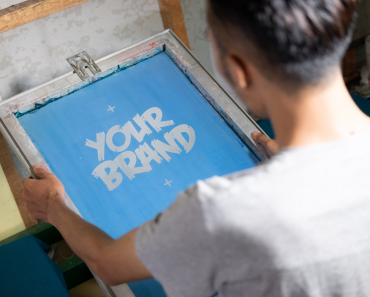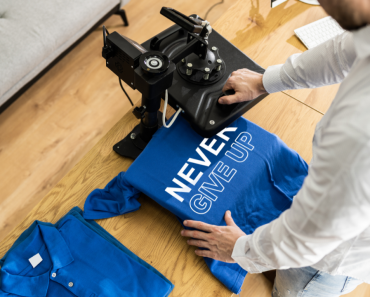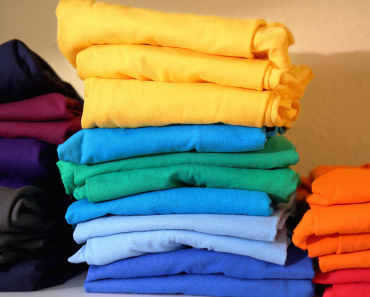Fabric designs are available in print on demand in a variety of ways, but if you’re searching for intricate imagery or a high-end appearance with a tactile touch, screen printing and embroidery are two standout choices.
Screen printing – the ink press technique for big or detailed artwork.
Embroidery – the stitching method for high-value branded artwork.
You may take design inspiration from a variety of sources, including books or blogs. You don’t need to be an expert in the field; all you have to do is figure out what kinds of designs work best for your brand and audience. Using screen printing as an example, we’ll look at how to create a long-lasting and cost-effective store. In this article, we’ll compare the differences between screen printing and embroidery.
What Is Screen Printing?
T-shirts and other textiles may be screen printed to create bright colours at a low cost. The design is imprinted on the fabric surface, giving it an elegant, tactile feel with more brilliant hues than digital printing fabrics.
The screen-printing technique uses a stencil screen pattern that has been pre-defined in the production process:
The design is printed on a transparent acetate film, which is laminated to the picture. A mesh screen that is appropriate for the fabric type and design intricacy is chosen by the printer.
The sample is covered in a light-reactive emulsion. The film is then applied to the mesh and exposed to strong light.
When the design is not visible, light hardens the emulsion around it. The remaining liquid is removed, leaving a stencil outline on the mesh screen
The screen is lowered onto a printing press on top of the cloth to make contact for ink-jet printing.
The mesh outline is ink-filled, and the fabric surface is printed on. After that, each cloth item is rewetted, dried, and checked for quality assurance.
When Is Screen Printing Utilized?
Screen printing on light textiles and delicate surfaces like cotton t-shirts, sports bags, and sweatshirts is a great choice.
Screen printing may be used on a variety of fabrics, both thicker and thinner, including polyester blends. If the design is not treated correctly, for example with moisture-wicking polyester, it will peel and crack. Use screen print to imprint detailed patterns with shadows, gradient effects, and typefaces.
The colours on a t-shirt are vibrant, so they stand out from the crowd. It’s ideal for dark and light surfaces because it captures vivid hues. Each tone requires an individual mesh layer that must be pressed separately for multi-coloured designs with varied shades. This extra work may result in higher costs.
Screen printing is ideal for mass purchases and recurring products since the same mesh template may be reused to print your design on numerous apparel.
What Is Embroidery?
Stitches are used to embroider. Manufacturers use embroidery machines or stitch by hand for a distinct aesthetic. Embroidery is most often utilized to adorn logos and small features that enhance the product’s value, such as on uniforms.
Working with embroidery designs necessitates careful regulations in order for the design to function in a stitched medium. Learn about embroidery design standards, which include specific design do’s and don’ts, using our guidelines.
When Is Embroidery Used?
Embroidery is a popular design choice for company logos, which are intended to be a signature item of identification. The concept that embroidery represents high-end items has been popularized by merchants such as Nike and Ralph Lauren.
For extra durability, put stitches on thicker materials and less intense colours. It’s ideal for headwear, coats, polos, and button-downs, with particular attention paid to the threading. Polyester or rayon is used by most machine embroidery manufacturers to increase longevity. The design maintains integrity and is considerably more long-lasting than printed inks.
Reduce the number of designs to keep them consistent and preserve any intricacy. Embroidery may be used to create colourful designs, but the matching thread may not always be available for some digital hues. For cost savings, we recommend sticking with the basic 16 colours for embroidery.
There are many similarities between print and embroidery, although the two processes are not identical. Colour and durability are two areas in which these methods share similar traits. One choice should be superior to another based on your budget, target audience, design, and fabric type.



